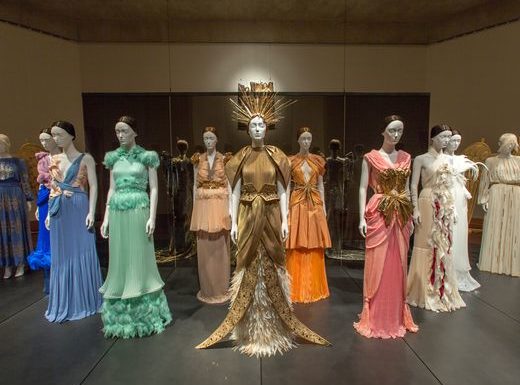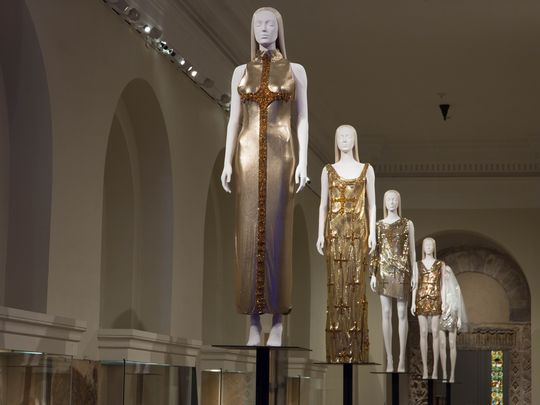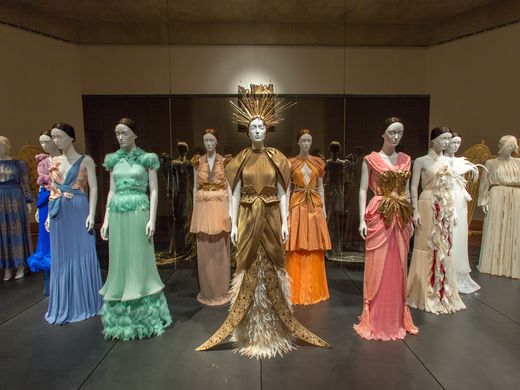

NBC Universal’s investigation into Matt Lauer found “no evidence indicating that any NBC News or Today Show leadership,” human resources or others “in positions of authority in the News Division received any complaints” about the workplace behavior of star anchor Matt Lauer until Nov. 27, just two days before his termination.
The company released its long-awaited report Wednesday, and NBC News chairman Andy Lack discussed the investigation in a staff memo provided to USA TODAY. He says almost 70 interviews were conducted with current and former employees, as well more than 30 focus groups with 262 current staffers.
 At the Met Gala later that evening, Rihanna’s outfit riffed on one of the exhibition’s most fabulous get-ups: the House of Dior’s Evening Ensemble from autumn/winter 2000–01, designed by John Galliano. The lavishly embroidered and jeweled robes matched the garments’ accompanying “mitre,” a kind of headdress for bishops (perhaps most popularly depicted in their chess piece representations).
At the Met Gala later that evening, Rihanna’s outfit riffed on one of the exhibition’s most fabulous get-ups: the House of Dior’s Evening Ensemble from autumn/winter 2000–01, designed by John Galliano. The lavishly embroidered and jeweled robes matched the garments’ accompanying “mitre,” a kind of headdress for bishops (perhaps most popularly depicted in their chess piece representations).
Galliano also created Rihanna’s look—a silver mini-dress, matching robe, and mitre—though, this time, for Maison Martin Margiela, where he’s worked since 2014. Thanks to High Priestess Robyn Rihanna Fenty, it’s now as good a time as any to investigate the mitre. (Whether this look inspires highly structured, ornate headwear for future collections remains to be seen.)
 The portion of the show situated in the Cloisters explicitly references the Crusades. The curators placed a beige quilted canvas ensemble by British designer Craig Green in dialogue with the Nine Heroes Tapestry, which features the Catholic warriors used to inspire the succession of 11th- to 13th-century conflicts, from King Arthur to Charlemagne. They emphasize how Islamic art impacts Green, as well; the designer visually unifies elements of cultures that were both the aggressors and aggressed in the ancient conflict.
The portion of the show situated in the Cloisters explicitly references the Crusades. The curators placed a beige quilted canvas ensemble by British designer Craig Green in dialogue with the Nine Heroes Tapestry, which features the Catholic warriors used to inspire the succession of 11th- to 13th-century conflicts, from King Arthur to Charlemagne. They emphasize how Islamic art impacts Green, as well; the designer visually unifies elements of cultures that were both the aggressors and aggressed in the ancient conflict.
 The Vatican also loaned out a series of its own mitres for “Heavenly Bodies,” which together offer a complicated history of politics and religion throughout Italy. The mitre of Pope Paul VI, who reigned from 1963 to 1978, is on view. Its accompanying text reveals that during the second Vatican Council (Vatican II) in 1964, Paul VI ended the use of the papal tiara, making the mitre the official headwear for coronation activities.
The Vatican also loaned out a series of its own mitres for “Heavenly Bodies,” which together offer a complicated history of politics and religion throughout Italy. The mitre of Pope Paul VI, who reigned from 1963 to 1978, is on view. Its accompanying text reveals that during the second Vatican Council (Vatican II) in 1964, Paul VI ended the use of the papal tiara, making the mitre the official headwear for coronation activities.
Vatican II, in general, sought to modernize the church, make it more accessible, and allow its members to more deeply engage with world issues. (HBO’s television series The Young Pope highlighted this moment—and the symbolic importance of ecclesiastical headwear—when Jude Law’s Pope Pius XIII reversed Paul’s decision, and opted to wear the tiara after all.) In these cases, decisions about hats became significant assertions of power and autonomy.

